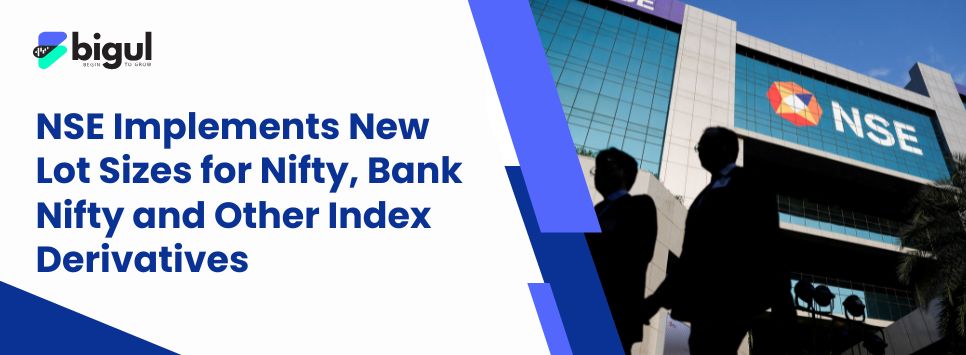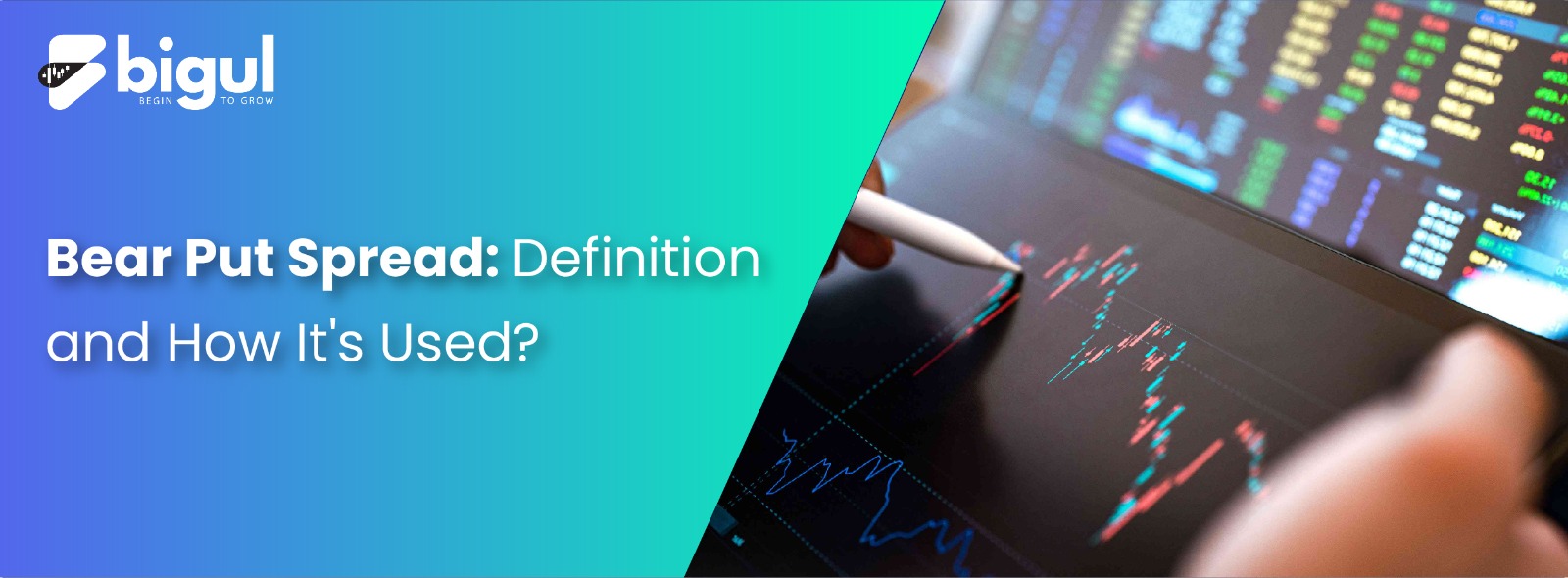Options trading is a complex and dynamic area of finance where investors use financial derivatives to manage risk and maximise returns. Among the multitude of options strategies available, the Bear Put Spread stands out as a versatile and essential tool.
This strategy is tailored for those who anticipate a bearish market trend and seek to profit from it while capping potential losses. Understanding the Bear Put Spread helps investors navigate volatile markets and protect their holdings.
This blog will explain the Bear Put Spread’s definition, components, mechanics, and strategic benefits for options traders.
What is Bear Put Spread?
A Bear Put Spread is an options trading strategy used by investors who anticipate a decline in the price of an underlying asset. It involves purchasing a put option with a specific strike price while simultaneously selling another put option with a lower strike price on the same asset and expiration date.
This strategy allows traders to profit from a bearish market outlook while limiting their potential losses. The difference in strike prices determines the maximum profit potential, and the sold put option helps offset the cost of buying the long put. Bear Put Spreads are known for their defined risk and reward profile.
How a Bear Put Spread Works
A bear put spread strategy is used when an investor expects a moderate decrease in the price of the underlying asset. This strategy involves buying one put option while simultaneously selling another put option with a lower strike price. It’s called a “bear” spread because it benefits from a bearish or downward-moving market.
Here’s how a bear put spread works:
- Long Put Option: You start by buying a put option, which gives you the right to sell the underlying asset at a specified strike price. This is your bearish bet on the market.
- Short Put Option: Simultaneously, you sell a put option with a lower strike price. By doing this, you generate income (the premium received from selling the put), but you also assume an obligation to buy the asset at the short put’s strike price if the option is exercised.
The difference between the strike prices represents your maximum profit potential, and it’s capped because you’ve sold a put option. Meanwhile, the premium received from selling puts partially offsets the cost of the long put, limiting your maximum loss.
Now, suppose you’re trading Nifty options in India, and the Nifty index is currently at 15,000. You could:
- Buy a Nifty put option with a strike price of 14,800 for Rs 200.
- Simultaneously, sell a Nifty put option with a strike price of 14,600 for Rs 150.
In this scenario, your maximum profit would be Rs 150 (Rs 200 – Rs 150), which occurs if Nifty falls to or below 14,600 at expiration. Your maximum loss is limited to the initial cost of the strategy, which is Rs 50 (Rs 200 – Rs 150).
This example demonstrates how a Bear Put Spread can be applied to capitalise on a bearish market outlook.
When to Use a Bear Put Spread
Here are the key scenarios when you should consider using a Bear Put Spread:
- Bearish Market Outlook: The primary and most obvious condition for implementing a Bear Put Spread is when you have a moderately bearish outlook on a particular stock or asset. You believe that its price will decline gradually in the near future.
- Moderate Bearishness: It’s essential to use this strategy when you anticipate a moderate or gradual decline in the underlying asset’s price rather than a sharp plummet. The strategy can capitalise on a slow and steady decline.
- Limited Downside Risk Tolerance: If you’re concerned about the potential losses associated with simply buying a put option, a Bear Put Spread allows you to mitigate your risk. It limits your maximum loss to the net premium paid for the spread.
- Desire for Lower Cost: Compared to buying a standalone long put option, a Bear Put Spread generally has a lower upfront cost. This can be advantageous for traders with limited capital or those looking to minimise initial investment.
- Volatility Expectations: When you expect a period of moderate volatility in the underlying asset, it may be an opportune time to use a Bear Put Spread. Moderate volatility can enhance the profitability of this strategy.
Advantages of Using a Bear Put Spread
Using a Bear Put Spread as an options trading strategy offers several notable advantages that can appeal to both expert traders and newcomers to the options market.
Here are some key advantages:
- Defined Risk: A Bear Put Spread offers a significant advantage through its well-defined risk profile. Traders know the maximum potential loss from the outset, which is limited to the initial cost of establishing the spread. This clarity is invaluable for risk management, allowing traders to make informed decisions and protect their capital. Knowing the precise downside risk empowers traders to strategise effectively and ensures that they won’t face unexpected, catastrophic losses, even in highly volatile markets.
- Lower Initial Investment: The Bear Put Spread requires a lower initial investment compared to buying a standalone put option. This cost advantage arises because the strategy involves simultaneously buying a put option while selling another put option with a lower strike price. The premium received from the short put partially offsets the premium paid for the long put, resulting in a reduced upfront cost. This makes the Bear Put Spread accessible to traders with limited capital while still allowing them to profit from bearish market conditions.
- Profit Potential in a Bearish Market: A Bear Put Spread allows traders to capitalise on a bearish market outlook, meaning they can make money when the price of the underlying asset falls. This strategy provides an advantage in situations where investors anticipate a decline in asset value but want to do so without the risks and complications associated with short selling. It offers a structured approach to profiting from falling prices while keeping potential losses in check.
- Reduced Time Decay Impact: Time decay, also known as Theta, affects the value of options as they approach expiration. With a Bear Put Spread, the impact of time decay is mitigated because it involves both buying and selling put options. The short put option helps offset the time decay of the long-put option, reducing the overall erosion of the spread’s value over time. This can be advantageous for traders as it allows them to maintain a more stable position when holding the spread.
- Risk-Return Balance: Bear Put Spread strikes a balanced risk-return profile. While it offers a more limited profit potential compared to aggressive bearish strategies, it mitigates risk by having well-defined maximum losses. This makes it an attractive choice for traders seeking to manage risk while still profiting in a bearish market, providing a sensible compromise between potential gains and downside protection.
- Flexibility in Strike Prices: Traders can tailor this strategy to their specific market outlook by choosing different strike prices for the long and short-put options. This allows them to adjust the spread based on varying levels of bearishness in the market. Whether they anticipate a mild or severe downturn, having the ability to fine-tune strike prices provides a versatile tool for adapting to changing market conditions and optimising potential returns.
Disadvantages of Using a Bear Put Spread
Here are some disadvantages of using a bear put spread:
- Limited Profit Potential: One of the main disadvantages of a bear put spread is that it offers limited profit potential. The maximum profit is capped at the difference between the strike prices minus the initial cost of setting up the spread. If the underlying asset’s price falls significantly beyond the lower strike price, you won’t get extra benefit from those additional price declines.
- Upfront Cost: Initiating a bear put spread requires an initial investment, as you must pay for the long put option (the one with the higher strike price).This upfront cost reduces your potential profit and increases your break-even point.
- Break-even Point: The bear put spread has a break-even point, meaning the underlying asset must decline sufficiently to cover the spread’s initial cost, including commissions before any profit is realised. This requirement limits potential gains if the asset’s price drop is less than anticipated, delaying profitability until a specific price decline occurs.
- Limited Protection: While a bearish spread can protect against moderate price declines, it may not provide sufficient protection in the event of a significant and sudden drop in the underlying asset’s price. In such cases, the losses on the short put option may offset the gains on the long-put option.
Conclusion
The Bear Put Spread is a risk-managed options trading technique that capitalises on expected negative price fluctuations in an underlying asset. In bearish markets, investors can profit cost-effectively by buying and selling put options with varying strike prices. This strategy’s defined risk and rewards make it a desirable trading tool. Before adopting it, you must grasp its mechanics and market conditions to maximise its effectiveness and minimise losses.




.jpg)





.jpg)
